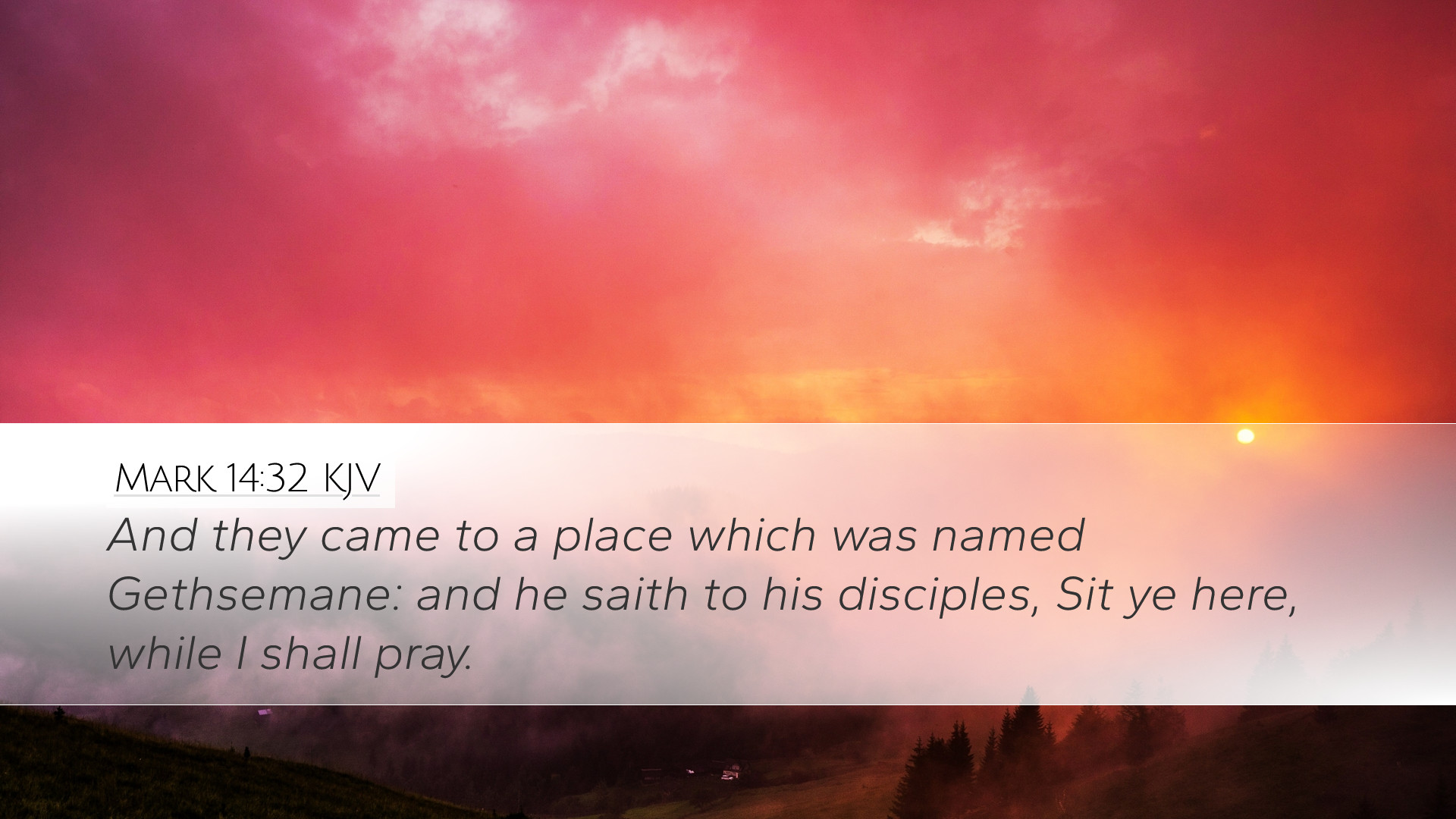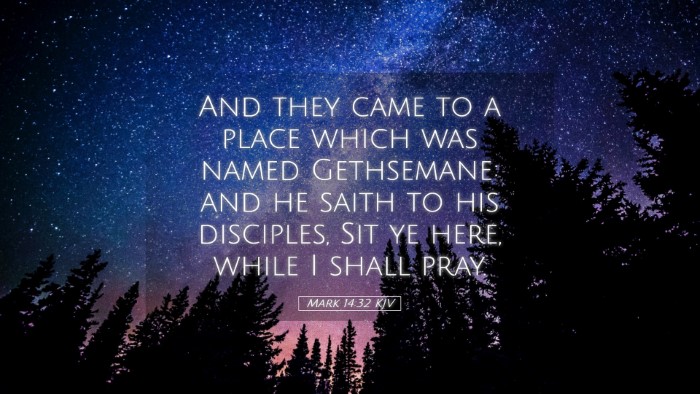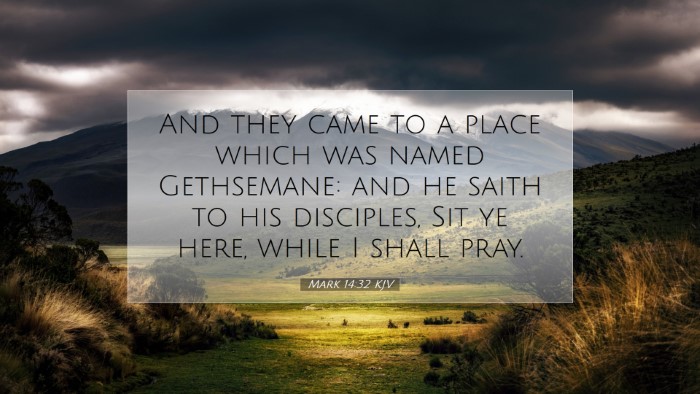Commentary on Mark 14:32
Mark 14:32 states: "And they went to a place which was named Gethsemane: and he saith to his disciples, Sit ye here, while I shall pray." This passage marks a pivotal moment in the Passion narrative, encapsulating the deep emotional struggle of Jesus as He approaches His impending crucifixion.
Context of the Passage
The scene takes place in the Garden of Gethsemane, located at the foot of the Mount of Olives. It is significant not only for its geographical location but also for its theological implications. This garden represents a place of both solitude and anguish, reflecting the internal conflict experienced by Jesus as He grapples with His mission.
Theological Insights
- Preparation for Suffering: As noted by Matthew Henry, Jesus leads His disciples to Gethsemane to prepare for the immense suffering He is about to endure. This act of prayer signifies His reliance on the Father, juxtaposing His divine nature with His humanity.
- The Disciples' Role: Albert Barnes emphasizes the instruction given to the disciples to "sit ye here, while I shall pray," highlighting their role as witnesses to Jesus' agony. Their presence, though not fully understood, is crucial to the fulfillment of prophecy and demonstrates the importance of community even in moments of individual despair.
- Human Experience of Jesus: Adam Clarke notes that the anguish experienced by Jesus is a profound demonstration of His identification with human suffering. This garden scene underscores the genuine emotions present in the Savior, allowing believers to relate to Him in their own struggles.
Emotional Depth
In this verse, the phrase "Sit ye here" indicates a desire for companionship yet emphasizes Jesus’ need to confront His impending fate alone in prayer. Matthew Henry reflects on this blend of solitude and companionship, pointing out the paradox of His situation: surrounded by His closest friends, yet anticipating the loneliness of the cross.
Literary Analysis
Mark employs striking imagery here; the garden itself becomes a symbol of prayer and struggle. Albert Barnes suggests that the profound silence of Gethsemane serves to amplify the intensity of Jesus' impending suffering. This literary choice invites readers to immerse themselves in the emotional landscape of the moment.
Application for Believers
The implications of this verse stretch beyond its immediate context. For pastors and theologians, it provides an opportunity to explore themes of prayer, suffering, and divine intercession. Christian leaders are encouraged to reflect on their own prayer lives, particularly in times of distress, and consider how they can guide others through similar struggles.
Students of the Bible are urged to consider how Jesus’ example in Gethsemane informs their understanding of perseverance in prayer. Adam Clarke points out that Jesus’ deep distress does not detract from His divine mission but rather enhances it, serving as a model for believers facing their own trials.
Conclusion
Mark 14:32 presents a moment of profound significance in the narrative of Jesus’ crucifixion. It illustrates His deep humanity intertwined with His divine purpose. Matthew Henry, Albert Barnes, and Adam Clarke collectively offer a rich tapestry of insights that can illuminate the hearts of pastors, students, and scholars alike. The lessons drawn from this verse encourage believers to engage deeply in prayer, understand the gravity of human suffering, and recognize the importance of community even in times of profound personal trial.


